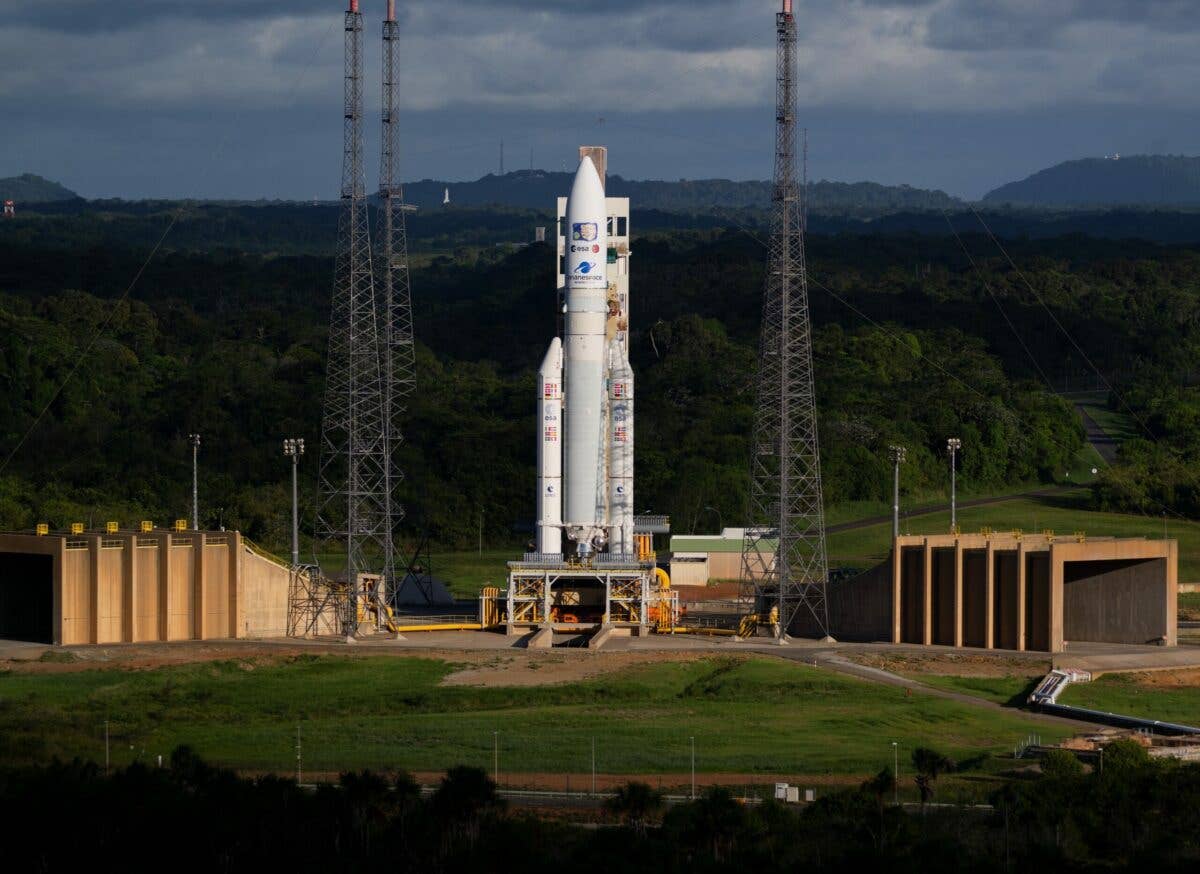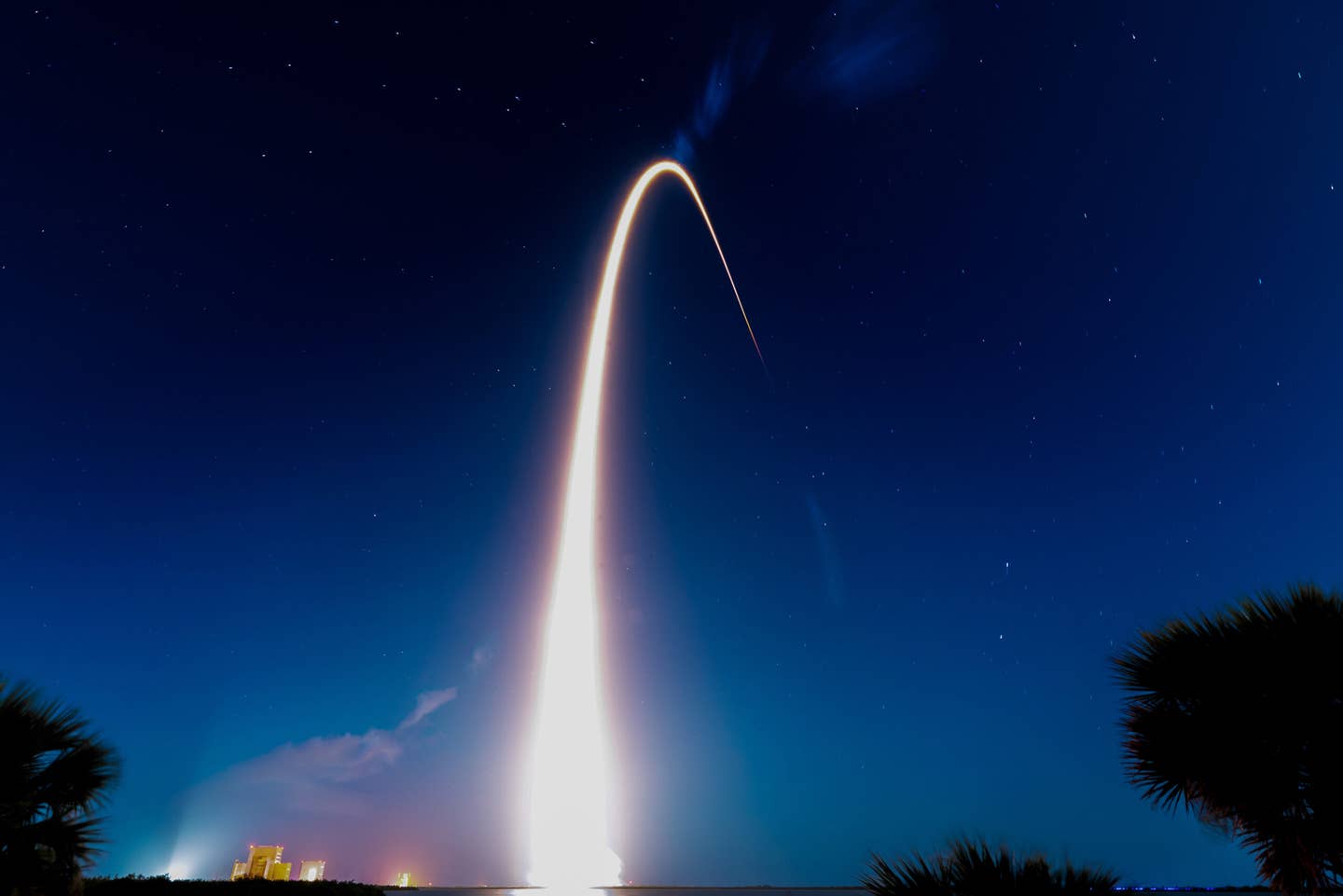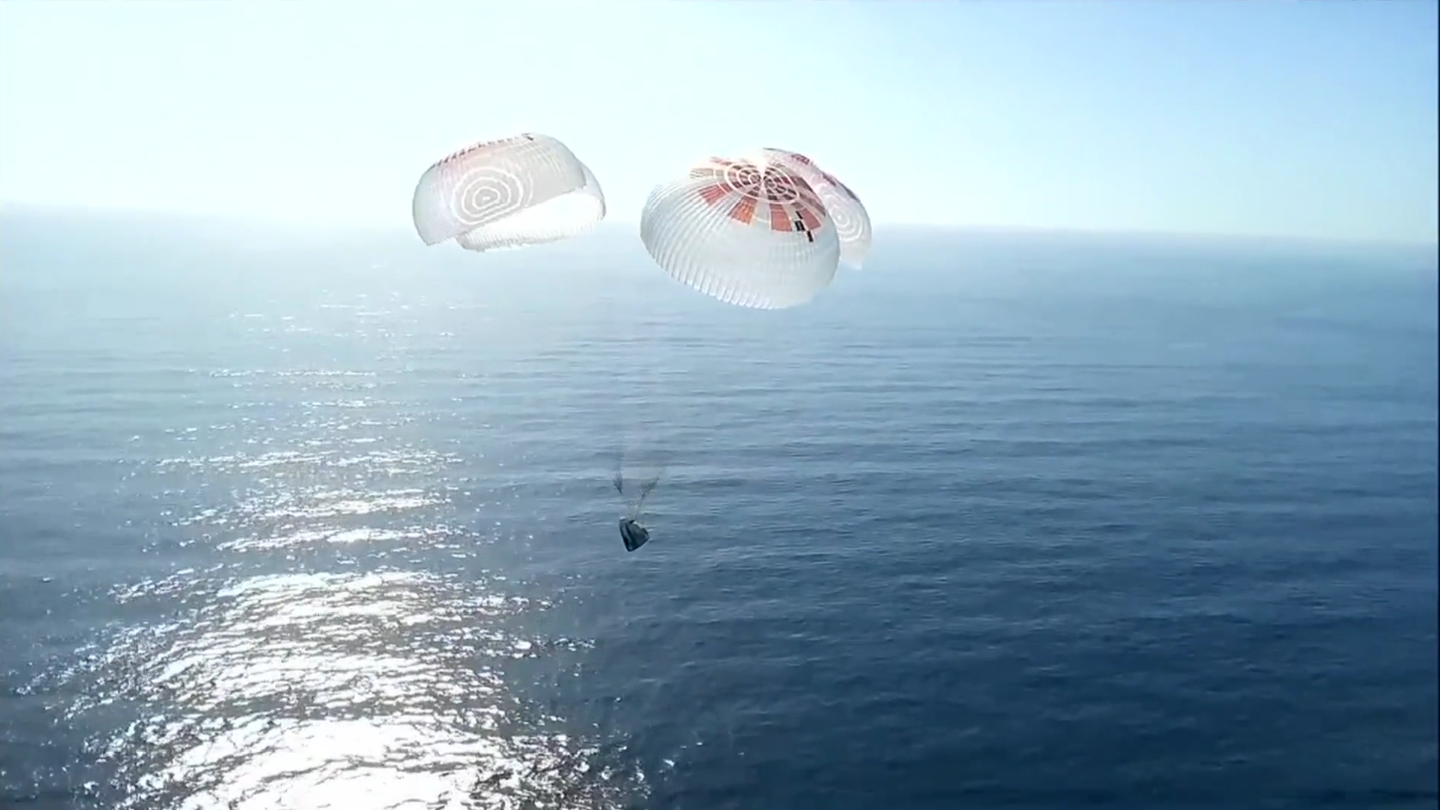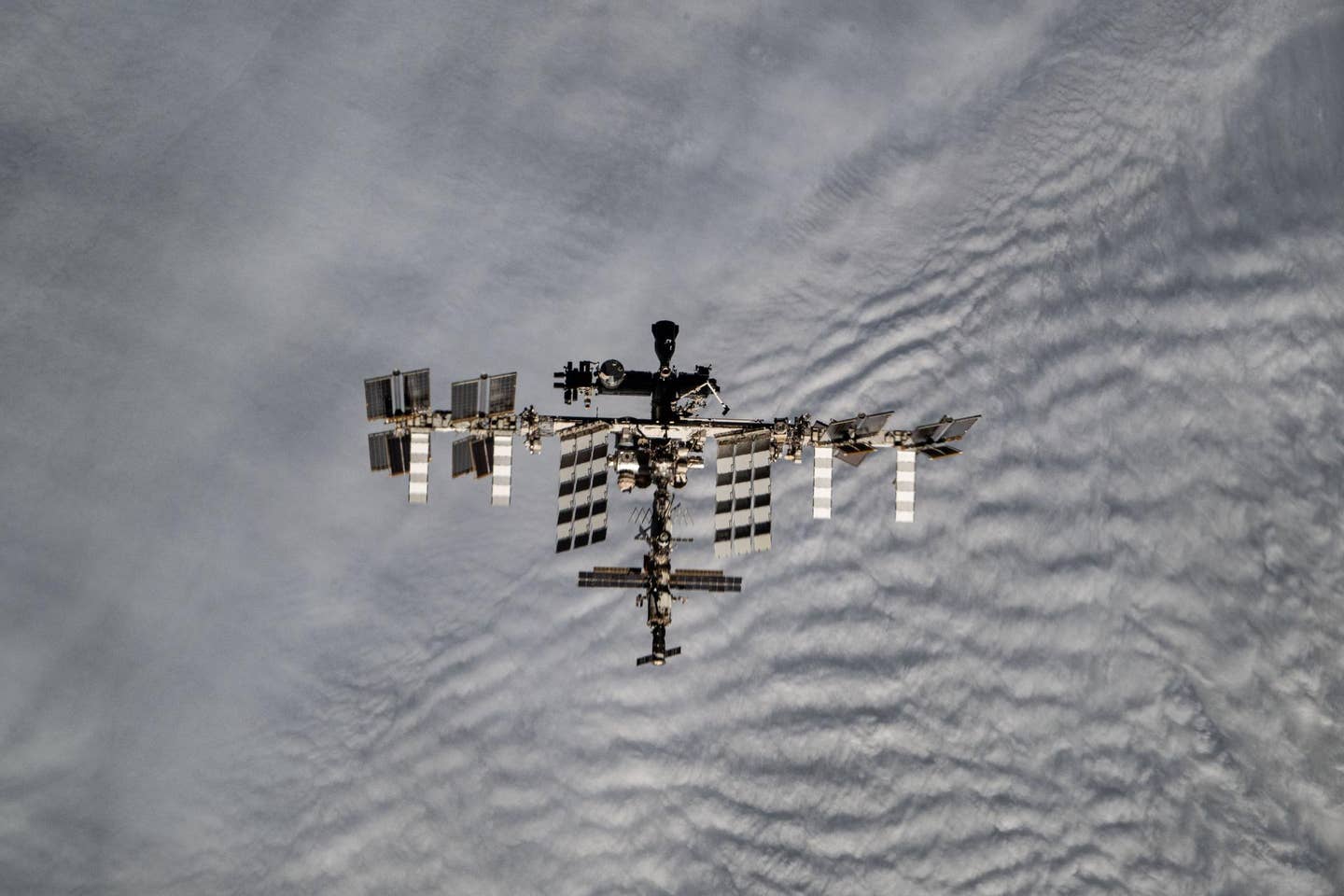When it Comes to Space Travel, NASA has the Juice—But ESA has JUICE
The Jupiter Icy Moons Explorer mission will spend the next eight years on a voyage to study the gas giant and three of its water-bearing moons

The JUICE spacecraft sits atop an Ariane 5 launcher April 12 at Europe’s Spaceport in Kourou, French Guiana. [Courtesy: ESA]
The Space Race is long over. But in the decades since that prolonged competition, North America has led the way.
Since 1973, there have been nine missions to the outer solar system, and the U.S. has had a hand in all of them. European agencies have also reached the outer planets a pair of times, but those voyages—the Ulysses and Cassini-Hudgens missions—had heavy NASA involvement.
This week, however, the European Space Agency (ESA) will finally have a deep space mission it can call its own.
The Jupiter Icy Moons Explorer (JUICE) will lift off Friday and spend the next eight years on a voyage to study the gas giant and three of its water-bearing moons, Ganymede, Callisto, and Europa.
Originally slated to launch Thursday at 1:14pm U.K. time (8:14 a.m. EST) but postponed because of inclement weather, the spacecraft will take off from an Ariane 5 heavy-lift launcher and encircle the massive planet for several months, completing flybys of the three moons as it orbits.
The mission will conclude with an orbital tour of Ganymede, the largest moon in the solar system and the only one with its own magnetic field. No spacecraft has ever orbited a moon besides our own.
According to ESA, the goal of the mission, which is expected to reach Jupiter in July 2031, is to explore the possibility of life in the solar system beyond Earth. In particular, researchers are looking to answer five questions:
- How has Jupiter’s environment shaped its moons, and vice versa?
- How do gas giants form, and what are they like?
- Is there—or has there ever been—life in the Jupiter system?
- What makes Ganymede unique?
- And what are ocean worlds like?
Olivier Witasse, an ESA planetary scientist who has worked on JUICE since 2015, provided more details during an April 6 press briefing.
“The main goal,” he explained, “is to understand whether there are habitable environments among those icy moons and around a giant planet like Jupiter. We will characterize, in particular, the liquid water oceans which are inside the icy moons.”
Witasse said researchers will examine the location, depth, and makeup of each saltwater ocean, which only exist in liquid form deep below the surface. They’ll also look at the rotation, composition, weather conditions, and magnetic field of Jupiter’s atmosphere, to determine whether conditions are suitable for life.
To do so, they’ll rely on 10 state-of-the-art instruments aboard the launcher. They include remote sensors with spectral imaging capabilities, tools like altimeters and radar sounders to map surfaces, and a suite of equipment to measure atmospheric characteristics like magnetic fields.
Coordinating all of them will be quite the undertaking: “We’re talking about a very large spacecraft with many key features that are striking…just after launch, there will be a lot of work to make sure that everything gets deployed properly,” said Alessandro Atzei, payload systems engineer for the mission.
In addition, JUICE will feature a powerful antenna to transmit data back to Earth, shields to protect against radiation, massive solar panels for energy collection, and a layer of insulation to shelter equipment from harsh temperatures.
To succeed, the spacecraft will also need to test out a new trick. En route to Jupiter, the spacecraft will perform what is referred to as a Lunar-Earth gravity assist, leveraging the gravity of the moon and Earth to propel it to higher speeds. Expected to take place around January 2029, it will be the world’s first attempt at such a maneuver.
As JUICE navigates the lonely vacuum of space, it’ll have at least some company. Another spacecraft, NASA’s Lucy, embarked on its 12-year sojourn to the Jupiter system in 2021, while the U.S.-backed Europa Clipper mission is slated for launch in October 2024. It too will spend several years orbiting the gas giant.
Outside of Lucy and Europa Clipper, the U.S. is eyeing several other projects. In 2024, NASA will send four astronauts to orbit the moon in the Artemis II spacecraft, while Elon Musk’s SpaceX is now an FAA approval away from an orbital launch attempt.
Mars could also be on the horizon—in June, NASA will begin an experiment where four humans spend a year inside a 3D-printed box designed to mimic conditions on the Red Planet. NASA currently has two Martian missions in development and several more under proposal.
But like all good things, the findings of JUICE and other missions will take time to arrive. Curious observers can follow along as the ESA tracks the spacecraft’s early movements by checking out this interactive tool, or by keeping an eye on the mission’s website or Twitter feed for updates.

Sign-up for newsletters & special offers!
Get the latest FLYING stories & special offers delivered directly to your inbox






